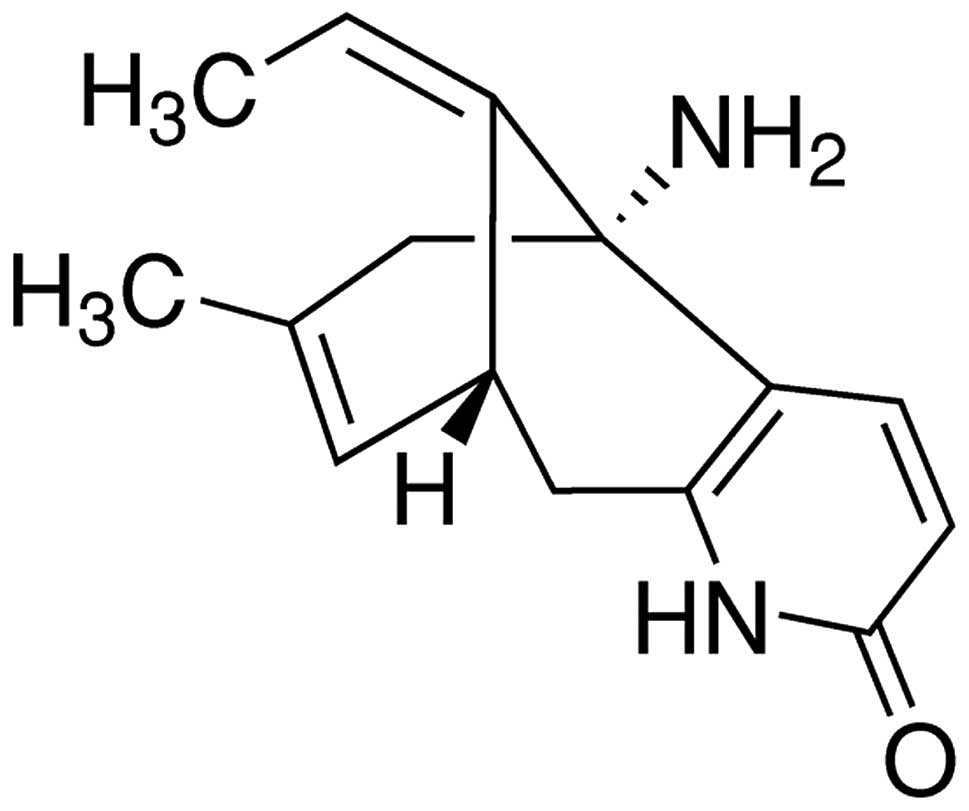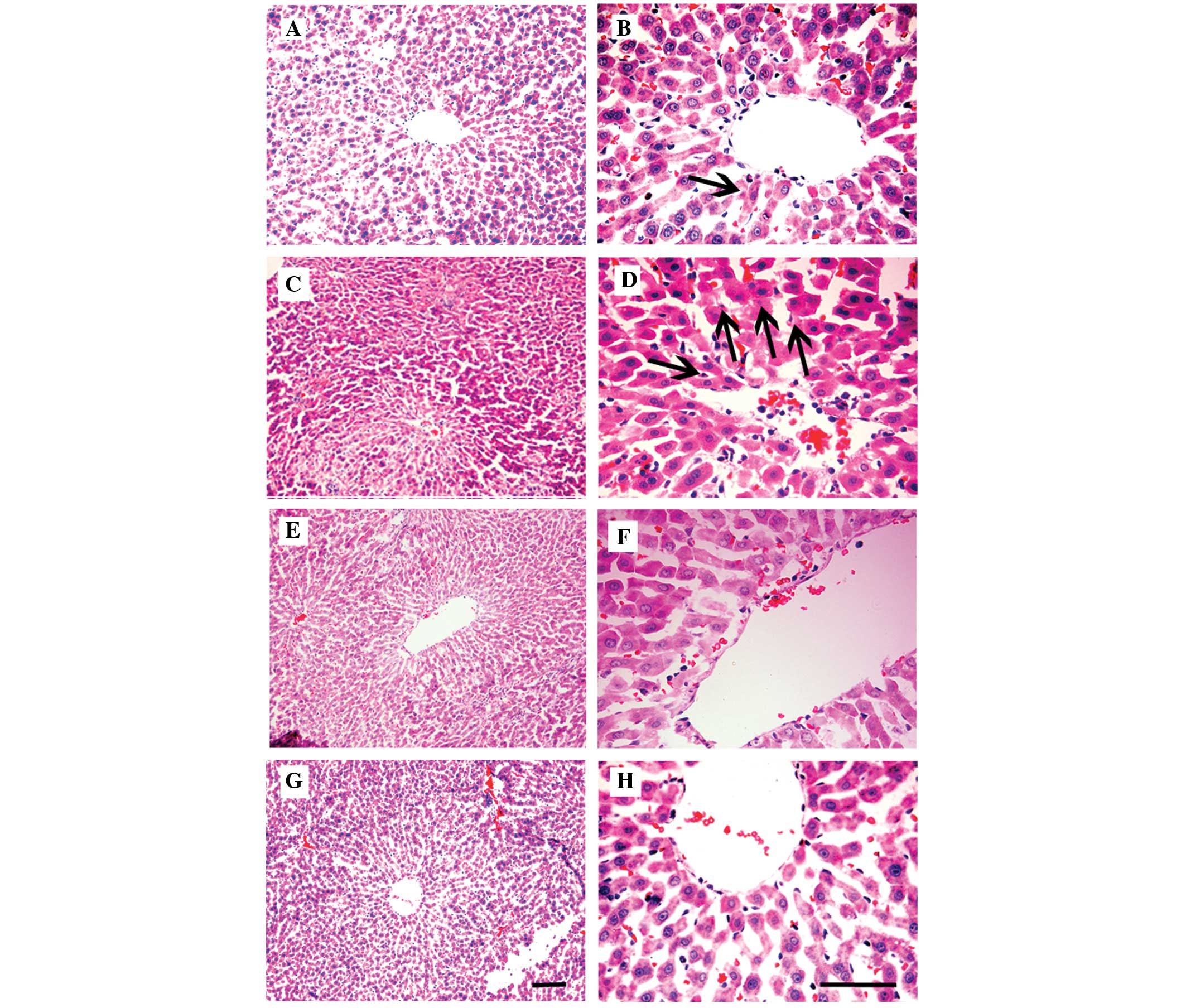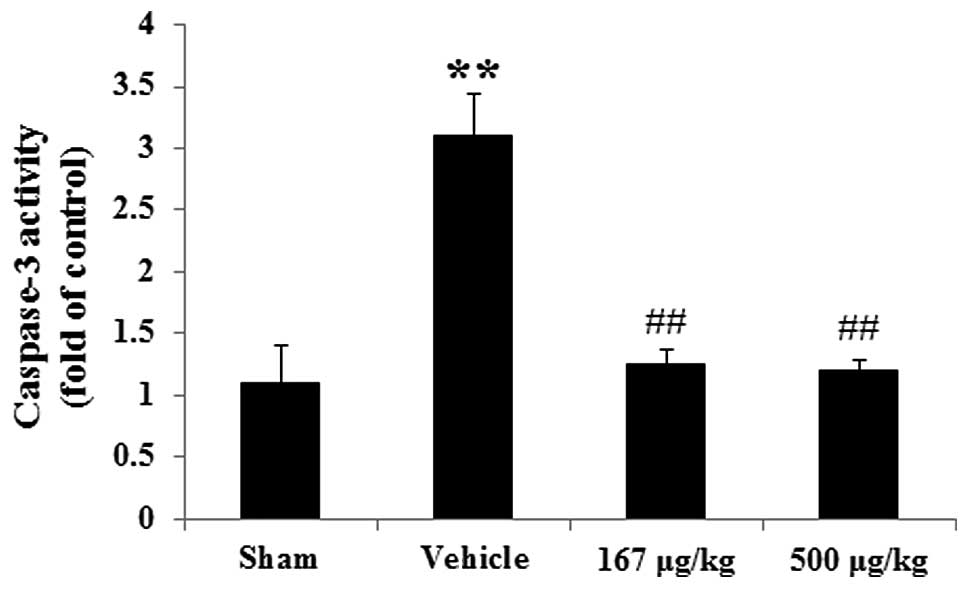|
1
|
Bayramoglu G, Bayramoglu A, Engur S,
Senturk H, Ozturk N and Colak S: The hepatoprotective effects of
Hypericum perforatum L. on hepatic ischemia/reperfusion
injury in rats. Cytotechnology. Jun 23–2013.(Epub ahead of
print).
|
|
2
|
Liu DL, Jeppsson B, Hakansson CH and
Odselius R: Multiple-system organ damage resulting from prolonged
hepatic inflow interruption. Arch Surg. 131:442–447. 1996.
View Article : Google Scholar : PubMed/NCBI
|
|
3
|
Çekın AH, Gür G, Türkoğlu S, et al: The
protective effect of L-carnitine on hepatic ischemia-reperfusion
injury in rats. Turk J Gastroenterol. 24:51–56. 2013.
|
|
4
|
Chan PH: Mitochondria and neuronal
death/survival signaling pathways in cerebral ischemia. Neurochem
Res. 29:1943–1949. 2004. View Article : Google Scholar : PubMed/NCBI
|
|
5
|
Chandra J, Samali A and Orrenius S:
Triggering and modulation of apoptosis by oxidative stress. Free
Radic Biol Med. 29:323–333. 2000. View Article : Google Scholar : PubMed/NCBI
|
|
6
|
He SQ, Zhang YH, Venugopal SK, et al:
Delivery of antioxidative enzyme genes protects against
ischemia/reperfusion-induced liver injury in mice. Liver Transpl.
12:1869–1879. 2006. View
Article : Google Scholar : PubMed/NCBI
|
|
7
|
Kohli V, Selzner M, Madden JF, Bentley RC
and Clavien PA: Endothelial cell and hepatocyte deaths occur by
apoptosis after ischemia-reperfusion injury in the rat liver.
Transplantation. 67:1099–1105. 1999. View Article : Google Scholar : PubMed/NCBI
|
|
8
|
Wang R, Yan H and Tang XC: Progress in
studies of huperzine A, a natural cholinesterase inhibitor from
Chinese herbal medicine. Acta Pharmacol Sin. 27:1–26. 2006.
View Article : Google Scholar : PubMed/NCBI
|
|
9
|
Zhang HY, Zheng CY, Yan H, et al:
Potential therapeutic targets of huperzine A for Alzheimer’s
disease and vascular dementia. Chem Biol Interact. 175:396–402.
2008.PubMed/NCBI
|
|
10
|
Ruan Q, Liu F, Gao Z, et al: The
anti-inflamm-aging and hepatoprotective effects of huperzine A in
D-galactose-treated rats. Mech Ageing Dev. 134:89–97. 2013.
View Article : Google Scholar : PubMed/NCBI
|
|
11
|
Ye W, Gong X, Xie J, et al: AChE
deficiency or inhibition decreases apoptosis and p53 expression and
protects renal function after ischemia/reperfusion. Apoptosis.
15:474–487. 2010. View Article : Google Scholar : PubMed/NCBI
|
|
12
|
Zhang F, Mao Y, Qiao H, et al: Protective
effects of taurine against endotoxin-induced acute liver injury
after hepatic ischemia reperfusion. Amino Acids. 38:237–245. 2010.
View Article : Google Scholar : PubMed/NCBI
|
|
13
|
Jiang H, Meng F, Li W, Tong L, Qiao H and
Sun X: Splenectomy ameliorates acute multiple organ damage induced
by liver warm ischemia reperfusion in rats. Surgery. 141:32–40.
2007. View Article : Google Scholar : PubMed/NCBI
|
|
14
|
Gillissen A, Bartling A, Schoen S and
Schultze-Werninghaus G: Antioxidant function of ambroxol in
mononuclear and polymorphonuclear cells in vitro. Lung.
175:235–242. 1997. View Article : Google Scholar : PubMed/NCBI
|
|
15
|
Zhou J, Zhang HY and Tang XC: Huperzine A
attenuates cognitive deficits and hippocampal neuronal damage after
transient global ischemia in gerbils. Neurosci Lett. 313:137–140.
2001. View Article : Google Scholar : PubMed/NCBI
|
|
16
|
Wang ZF and Tang XC: Huperzine A protects
C6 rat glioma cells against oxygen-glucose deprivation-induced
injury. FEBS Lett. 581:596–602. 2007. View Article : Google Scholar : PubMed/NCBI
|
|
17
|
Kang KJ: Mechanism of hepatic
ischemia/reperfusion injury and protection against reperfusion
injury. Transplant Proc. 34:2659–2661. 2002. View Article : Google Scholar : PubMed/NCBI
|
|
18
|
Teoh NC and Farrell GC: Hepatic ischemia
reperfusion injury: pathogenic mechanisms and basis for
hepatoprotection. J Gastroenterol Hepatol. 18:891–902. 2003.
View Article : Google Scholar : PubMed/NCBI
|
|
19
|
Schauer RJ, Gerbes AL, Vonier D, et al:
Glutathione protects the rat liver against reperfusion injury after
prolonged warm ischemia. Ann Surg. 239:220–231. 2004. View Article : Google Scholar : PubMed/NCBI
|
|
20
|
Perry DK, Smyth MJ, Stennicke HR, et al:
Zinc is a potent inhibitor of the apoptotic protease, caspase-3. A
novel target for zinc in the inhibition of apoptosis. J Biol Chem.
272:18530–18533. 1997. View Article : Google Scholar : PubMed/NCBI
|
|
21
|
Jin S and Dai CL: Attenuation of
reperfusion-induced hepatocyte apoptosis is associated with
reversed bcl-2/bax ratio in hemi-hepatic artery-preserved portal
occlusion. J Surg Res. 174:298–304. 2012. View Article : Google Scholar : PubMed/NCBI
|




















